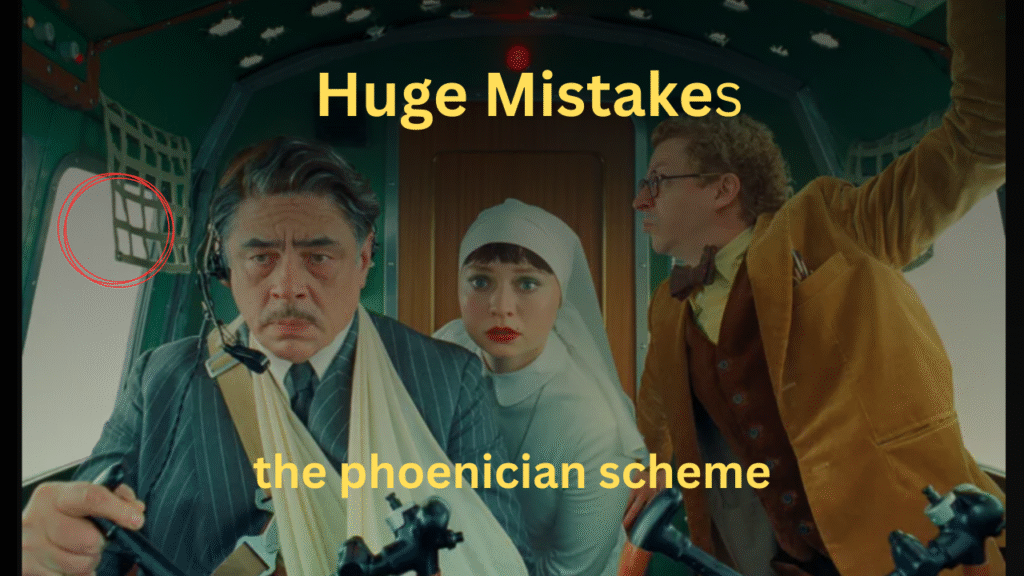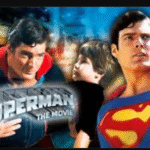When The Phoenician Scheme hit theaters, audiences were pulled into a web of ancient conspiracies, high-stakes espionage, and dark political secrets hidden across Europe and the Middle East. The film offered a fresh take on the historical action-thriller genre and quickly gained attention for its mysterious tone, rich visuals, and clever twists.
But like many ambitious films, The Phoenician Scheme isn’t without its flaws. While it’s a solid piece of entertainment, there are several glaring and subtle mistakes throughout the movie that sharp-eyed viewers or anyone watching it a second or third time can’t help but notice.
In this deep dive, we’ll explore the top mistakes from historical inaccuracies and character inconsistencies to editing glitches and logic holes. Whether you’re a casual viewer or a serious cinema lover, you’ll enjoy uncovering what slipped through the cracks in this complex cinematic puzzle.
The Phoenician Timeline Doesn’t Add Up
Let’s start with one of the movie’s core issues the timeline of the ancient Phoenicians. The film suggests that the secret artifact hidden by the Phoenician civilization is over 4000 years old and contains a map leading to a “power source” buried beneath modern-day Lebanon.
But here’s the catch: historically, the Phoenician civilization peaked around 1500 BC, not 2000 BC. The movie confuses Phoenician culture with earlier Mesopotamian or Egyptian civilizations. It’s a small detail, but when the plot hinges on “4000-year-old” documents and codes supposedly created by Phoenicians, the historical math just doesn’t add up.This might seem like a nitpick, but for history buffs and scholars, this error instantly breaks immersion.
read more :- The Phoenician Scheme Movie Review (2025): Cast, Plot, Ending & is It Worth Watching?
Language Inconsistencies in Ancient Texts
In several scenes, characters like Dr. Eliza Morton translate ancient Phoenician scrolls using nothing but a basic Latin-to-English cipher. But here’s the problem: Phoenician script is not Latin-based, and it doesn’t resemble modern English grammar at all.
In real archaeology, deciphering ancient scripts especially one like Phoenician – would require deep linguistic expertise, contextual clues, and possibly even years of academic work. Yet, the film simplifies this to a basic “decode and read in seconds” moment, which feels more like National Treasure fan-fiction than true historical realism.
Jet Lag and Geography Glitches
At one point, the characters travel from Paris to Beirut, and somehow, they land, rent a Jeep, and hike to a desert excavation site all within what seems like two or three hours.
This timeline feels unrealistic for a few reasons:
Paris to Beirut is a 4-5 hour flight at minimum.
Customs, gear setup, and field travel would take half a day or more.
The terrain shown is desert-like, yet the location they visit is in coastal Lebanon which has a Mediterranean climate, not Sahara-level dryness.
For a movie so focused on global politics and real-world geography, this mix-up weakens the immersion and makes it feel rushed.
The Double Agent Plot Hole
Agent Kassem, who’s revealed halfway through the film to be a double agent working for both M16 and a mysterious private syndicate, is portrayed as cold, calculated, and always ten steps ahead.
Yet in an earlier scene (when Eliza is first kidnapped), Kassem openly shows panic, confusion, and even seems surprised by the kidnappers’ presence even though he should’ve known all along.
This inconsistency isn’t just a character slip; it’s a major plot contradiction. If you watch it again, Kassem’s reactions make no sense given what we learn later. Either he’s faking panic which the movie never confirms or the writers forgot to align his behavior with the twist.
Surveillance Tech That’s Too Convenient
In one of the film’s critical moments, the heroes track down a lost phone’s location via satellite in under ten seconds and somehow manage to get a live feed from a street camera in rural Jordan.
As exciting as this scene is, the tech is unrealistically advanced, even by Hollywood standards. Satellite tracking doesn’t work this fast, and many Middle Eastern rural areas don’t have connected traffic cams with instant live-stream capabilities.
This is a classic “magic tech” moment where writers stretch reality to move the plot forward. It’s a mistake because it sacrifices believability for convenience – and savvy viewers can feel the shortcut.
Lack of Character Arcs
One of the film’s emotional weak points lies in its character development, especially for supporting roles.Take Sophia Rami, the former archaeologist turned mercenary. She starts the movie as a gritty, no-nonsense fighter who only cares about money. But by the end, she’s helping save lives and protect heritage with no clear reason for her change of heart.
There’s no moment of realization, no inner conflict shown. Her shift feels forced, like the writers just needed her on the good side for the finale. The same goes for military General Darwish, whose motivations jump between loyalty and betrayal without much logic.These rushed transformations make the ending less emotionally satisfying – and feel like a missed opportunity for richer storytelling.
Bomb That’s Too Clean
In a major action sequence, a bomb explodes inside a museum vault. The heroes are thrown back, the room shakes, and there’s dramatic slow-motion chaos but just minutes later, the artifact survives with zero damage.
Not a single scratch, burn mark, or crack.Now, we understand that movies often give key objects plot armor, but this scene really stretches it. Everything else in the room is destroyed, and yet the centerpiece artifact the ancient map tablet remains perfectly intact.It’s a classic “Hollywood explosion” mistake, and it pulls viewers out of the drama because it’s just too convenient.
Overuse of Coincidence
For a movie that builds itself on mystery and tension, The Phoenician Scheme relies too often on coincidence to move the story forward.
Examples include:Eliza randomly running into a former professor who just happens to have a copy of a lost Phoenician text.The team escaping a locked cell because a minor guard happens to be Eliza’s cousin.The final clue being etched on the back of a museum ticket – which she nearly throws away.
These moments feel less like smart writing and more like lazy convenience. They take away from the characters’ intelligence and make the plot feel too “easy” in moments where it should be hard-earned.
Pacing Issues in the Third Act
The film begins with excellent pacing a mysterious murder, slow-burn clues, international travel. But as the third act hits, the movie starts rushing toward its climax.
We get too many rapid reveals in a short span the real villain, the hidden map, the betrayal, the lost chamber, the ancient code, and the final shootout all in about 15-20 minutes.
As a result, none of the big moments land emotionally. The twist doesn’t have time to sink in. The villain’s motives feel undercooked. And the action feels like it’s just racing to the credits.
Slowing down even by 10 minutes could’ve let the ending breathe and left a much stronger impact.
Product Placement That Sticks Out
You might’ve missed it, but there are a few scenes where product placement is painfully obvious. One moment shows a close-up of a character dramatically drinking from a branded energy drink logo front and center, with awkward focus.Another shows a character searching something on a specific phone brand, with a lingering shot on the home screen.
These moments don’t ruin the movie, but they do feel out of place in a serious thriller about ancient secrets. It takes away from the mood and makes you feel like you’re watching a commercial.
Great Idea, Flawed Execution
The Phoenician Scheme had everything going for it a smart concept, a rich historical angle, solid acting, and breathtaking locations. But like many high-concept thrillers, it falls into a few traps: over-complication, rushed character development, and unrealistic conveniences
That doesn’t mean it’s not enjoyable it is. But the mistakes are worth pointing out because they show just how close the film came to being great instead of just good.Still, for fans of mystery, history, and action, this movie is a solid one-time watch or even better, a rewatch where you can spot all these little errors and appreciate how storytelling works (or doesn’t) on a deeper level


